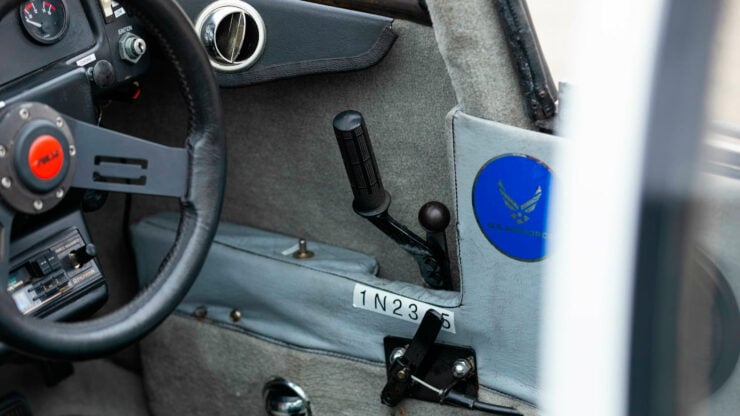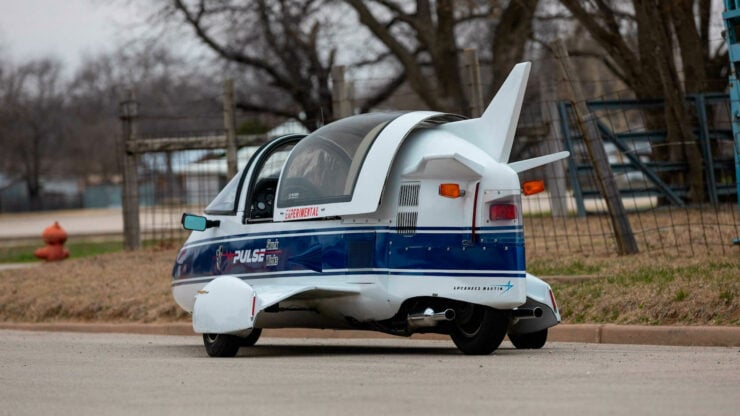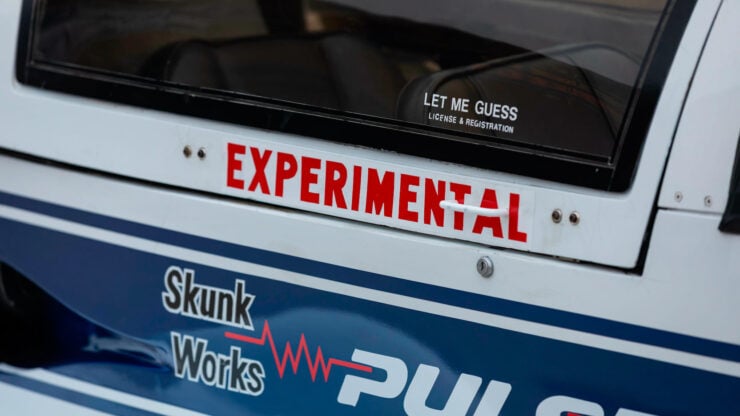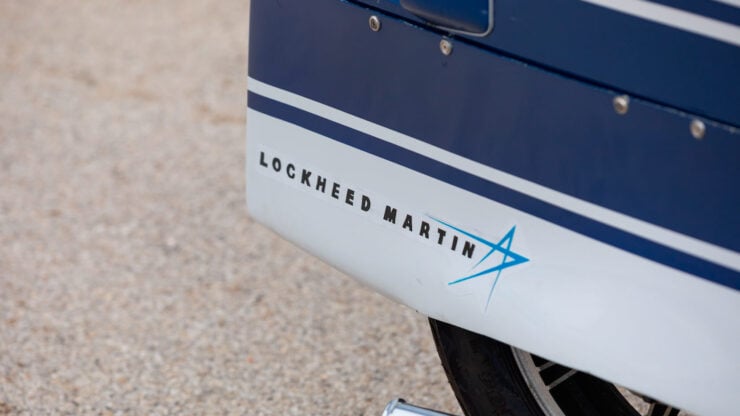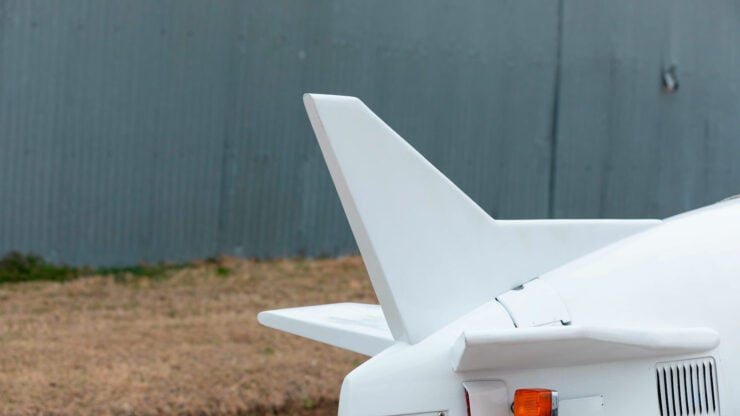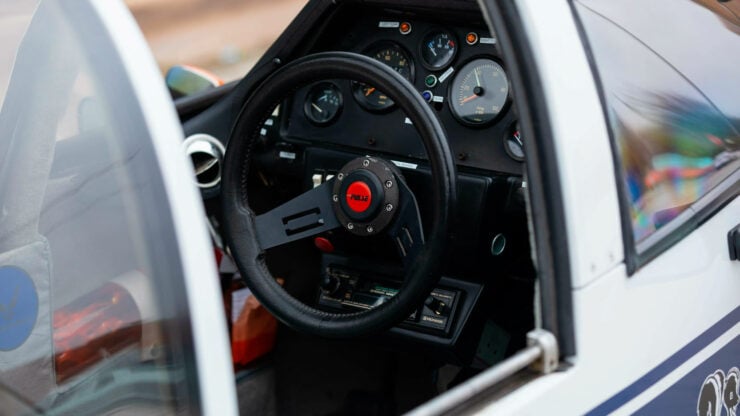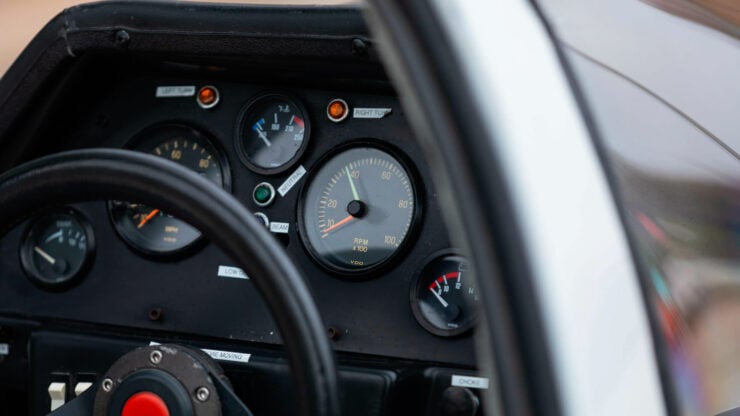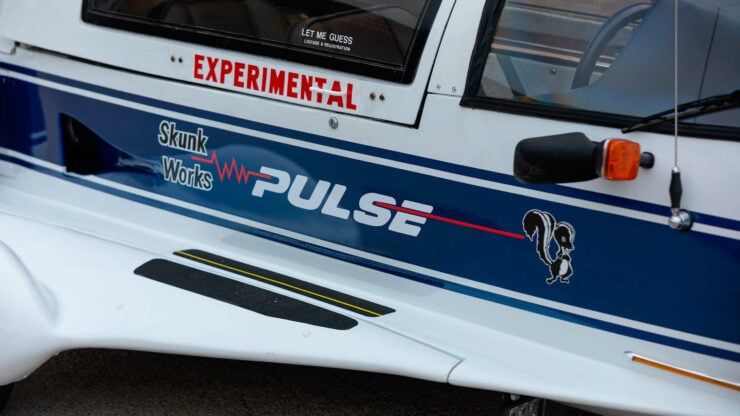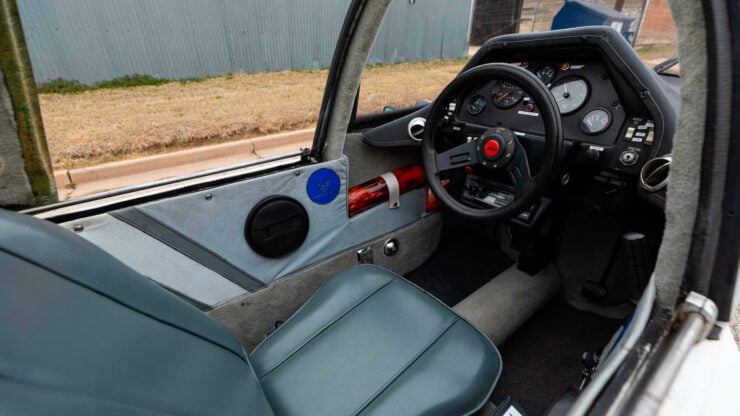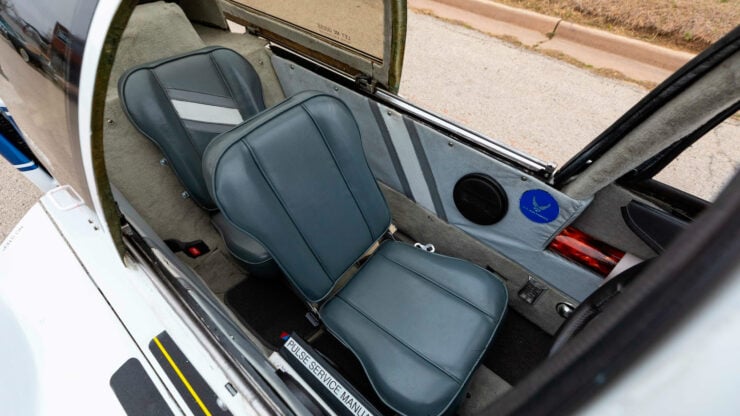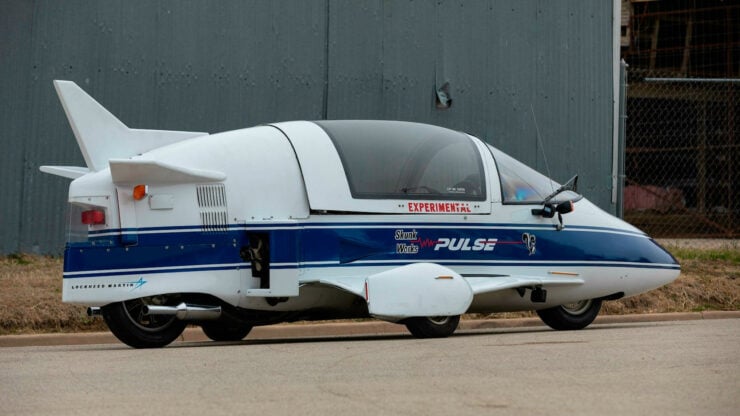The Pulse Autocycle is one of the more unusual of the low-volume American production cars, it was developed by an aircraft designer to offer the best aerodynamics and fuel-efficiency possible, while still offering seating for two and a modest amount of cargo space.
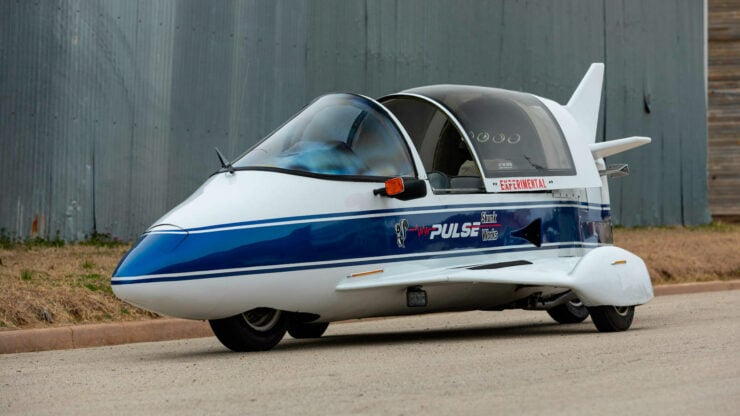
The Autocycle is powered by a motorcycle engine that drives the rear wheel, and it has small “wings” on either side with stabilizer wheels to keep you upright. It also has a vertical stabilizer fin and horizontal rear winglets, making it look remarkably similar to the Bede BD-5J jet aircraft.
Fast Facts – The Pulse Autocycle
- The Pulse Autocycle is an unusual vehicle with a futuristic design that claimed to combine the best features of a motorcycle and a car. It has an aerodynamic fiberglass body and it could seat two people in tandem, one in front of the other. It was powered by a motorcycle engine and had a top speed of 85+ mph depending on variant.
- One of the key features of the Pulse Autocycle was its stability. Unlike a motorcycle, it has four wheels, meaning it can’t lean but it also can’t tip over. However, there were concerns about its safety, as it was not crash-tested.
- The Pulse Autocycle was designed to be as fuel-efficient as possible. Its lightweight body and aircraft inspired aerodynamic shape meant that it used less fuel than a conventional car. This was important at a time when gas prices were high, and people were looking for ways to save money on transportation.
- The Pulse Autocycle was a popular vehicle when it was first introduced in the early 1980s. It was featured in magazines and newspapers around the world, and it created a lot of excitement. However, sales of the vehicle slowed down in the late 1980s due to increased competition and changing tastes. Bede produced around 360 units of the Pulse Autocycle in total before production ceased.
Jim Bede – Designer Extraordinaire
Jim Bede is a man who deserves to be far better known than he is, he designed a slew of influential aircraft during his life starting back in 1961, as well as a few experimental cars that he developed to be highly-fuel efficient and cost-effective to own and operate.
Above Video: This is a clip from the 1983 James Bond film “Octopussy” that includes the Jim Bede-designed Bede BD-5J jet aircraft.
Bede graduated from both the West Technical School in Cleveland and Fenn College with an Aeronautical Engineer Bachelor of Science Degree in 1957. He worked for North American Aviation as a performance engineer for a number of years where he contributed to both the FJ-4 Fury and A3J Vigilante projects for the United States Navy.
In 1961 Bede left North American Aviation and returned to Cleveland to set up his own aircraft company, named Bede Aviation. His first design was one of the world’s first true kit planes, the Bede BD-1.
The Bede BD-1 was developed from the outset to be as simple as possible for people to build at home in their garage. It had a projected cost to buy of $2,500 USD which included the engine, and it had a folding wing design so that owners could tow it home and store it in their own garage to eliminate costly hanger rental fees.
Developing any aircraft from scratch is a major undertaking and although Bede got it close to production readiness the money began to run out, and the project was taken over. The company became known as American Aviation and the aircraft entered production as the American Aviation AA-1 Yankee Clipper.
American Aviation was later taken over by Grumman and became Grumman American.
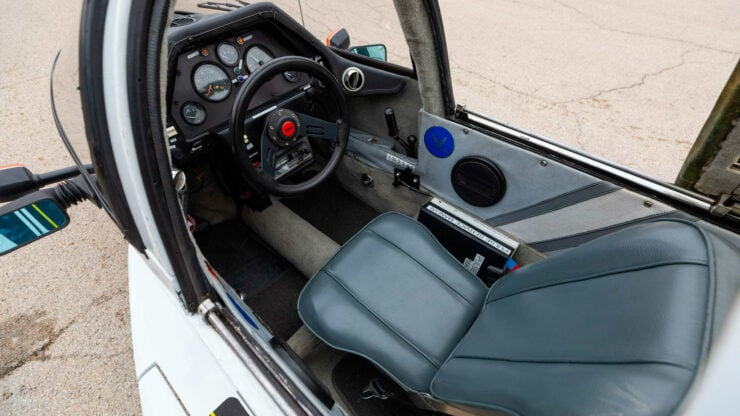
Inside the Pulse Autocycle you’ll find seating for two in tandem configuration. The gear lever is on the right and steering is done with a wheel rather than with motorcycle-style handlebars.
Bede went on to design a number of aircraft including the Bede BD-4, which was essentially an improved version of the earlier Bede BD-1 design. He also developed the advanced Bede BD-5 that looked like a miniature jet fighter, then later he created the jet-powered BD-5J.
Interestingly a Bede BD-5J would appear in the opening sequence of the James Bond film Octopussy in 1983 (see the trailer above).
The Pulse Autocycle
The Pulse Autocycle was one of Jim Bede’s automotive designs, he created a small number of highly fuel-efficient cars over his lifetime, all of which used his aerospace engineering background for improved aerodynamics.
The most famous of the Bede-designed cars, the Pulse Autocycle, had a body very similar in design to the earlier Bede BD-5 aircraft, with tandem seating and a sliding canopy for entry/exit.
A number of different motorcycle engines were used during production, and the Autocycle had a tubular steel chassis with a lightweight fiberglass body.
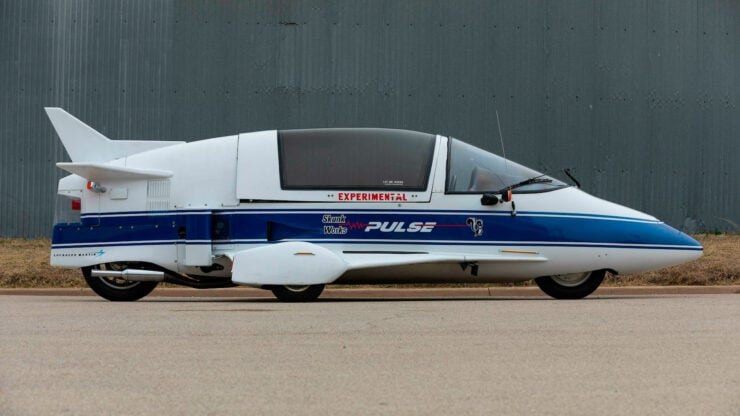
While motorcycles have just two wheels the Pulse Autocycle needed additional stabilizer wheels for cornering and parking. Jim Bede designed the vehicle with a pair of wing-like structures on either side that had smaller wheels underneath. Further adding to the aircraft resemblance was the vertical stabilizer fin on the rear, and the two rear winglets on either side.
Manufacturing of the Autocycle was undertaken by the Owosso Motor Car Company of Michigan between 1985 and 1990. The vehicles had a 123″ wheelbase, an overall length of 192″, with a width of 76″, a height of 54″, and they weighed in at approximately 1,000 lbs depending on final specification and engine used.
The company described their vehicle as a Ground Cruising Recreational Vehicle (GCRV) though this concept never really caught on. The purpose of combining the car and the motorcycle into a single vehicle with aerodynamics borrowed from the world of aircraft was fuel efficiency, 80+ mpg was reported by some owners.
The fun factor was also a big motivator behind the design, with the vehicle offering motorcycle-like acceleration and an altogether new driving experience described as being like flying a plane, riding a motorcycle, and driving a car all at the same time.
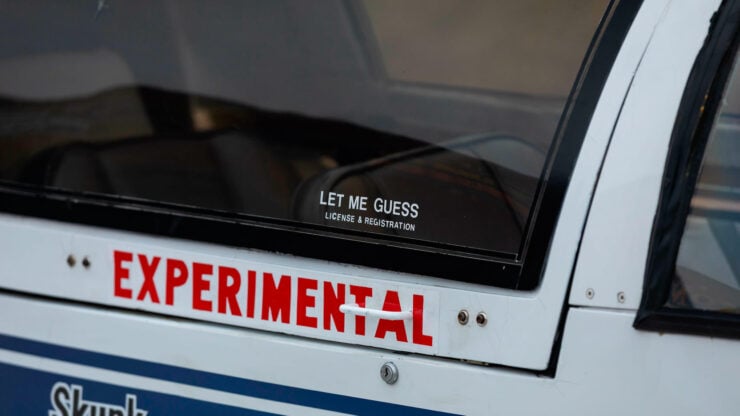
Most of the Autocycle production occurred in the 1980s and by the time demand dwindled off and it left production, an estimated 360 units had been made including one that was bought by Coca-Cola, painted in the company’s livery, and used as a promotional vehicle.
Today the surviving examples of the Autocycle are kept on the road by a dedicated group of owners, and they have regular meet-ups across the country to swap tips, tricks, and advice.
The 1985 Pulse Autocycle Shown Here
The vehicle you see here is a Pulse Autocycle from 1985. It’s powered by a Honda GL 1,100cc flat-four engine with a 5-speed manual transmission and it’s finished in a white and blue livery inspired by the world of aircraft.
Inside the cockpit you’ll find seating for two in tandem configuration, it has a right side gear shifter, a two-spoke steering wheel, and floor pedals for the clutch, brake, and accelerator.
The vehicle also has a Pioneer Super Tuner cassette stereo and it comes with a sizable binder of records. It’s been on display at the Horton Classic Car Museum for many years and as such it will need a full recommissioning if the new owner wants to get it back on the road.
It’s due to roll across the auction block with Mecum in mid-April, and you can visit the listing here if you’ll like to read more about it or register to bid.
